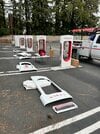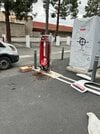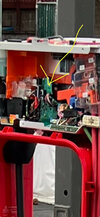ewoodrick
Well-Known Member
Sure, but let's do a little math.I'm wondering about distributed generation, for the most part solar panels on people's roofs. If enough of that is done, does it reduce some of the need for upgrading of the power grid? I realize that sometimes things just get old, 50 years is a long time to use the same wires, transformers, etc!
I guess the point is, might it be more cost-effective, or in some other way superior, for the utilities and other groups involved to make it more enticing to the homeowners to go solar? Or to put wind turbines in, or whatever?
Just thinking.
500kW = 500,000W
A typical solar cell is about 100W, some go to 300w, but are much more expensive.
500,000 / 100 = 5,000 panels which if my math is right, about 10 acres.
But for areas in the middle of nowhere, land can be cheap and installation easy.





